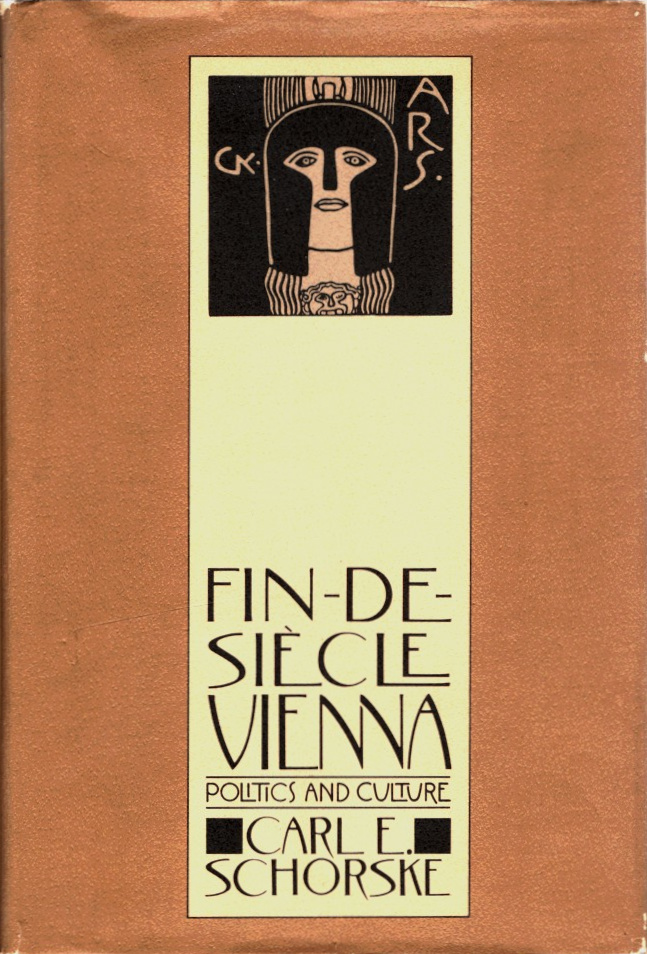Hardcover, 378 pages
English language
Published 1980 by Alfred A. Knopf.

Hardcover, 378 pages
English language
Published 1980 by Alfred A. Knopf.
From one of the truly original scholars of our time—the landmark book that embodies his work of the last decades: a magnificent revelation of Habsburg Vienna in the late nineteenth and early twentieth centuries, where out of a crisis of political and social disintegration so much of modern art and thought was born.
Focusing on the points where politics and culture intersect, Professor Schorske shows how the shifts of power and the confrontation of ideologies—as popular movements of both Right and Left vied to wrest control from the liberal middle class—created a vibrant, fertile context for the artistry and intellect of men of genius. Among them were Sigmund Freud, the painters Gustav Klimt and Oskar Kokoschka, the playwrights Hugo von Hofmannsthal and Arthur Schnitzler, the architect Otto Wagner, and the city planner Canullo Sitte.
In seven interlinked essays, Schorske develops the connections between different aspects of Viennese culture (politics and …
From one of the truly original scholars of our time—the landmark book that embodies his work of the last decades: a magnificent revelation of Habsburg Vienna in the late nineteenth and early twentieth centuries, where out of a crisis of political and social disintegration so much of modern art and thought was born.
Focusing on the points where politics and culture intersect, Professor Schorske shows how the shifts of power and the confrontation of ideologies—as popular movements of both Right and Left vied to wrest control from the liberal middle class—created a vibrant, fertile context for the artistry and intellect of men of genius. Among them were Sigmund Freud, the painters Gustav Klimt and Oskar Kokoschka, the playwrights Hugo von Hofmannsthal and Arthur Schnitzler, the architect Otto Wagner, and the city planner Canullo Sitte.
In seven interlinked essays, Schorske develops the connections between different aspects of Viennese culture (politics and architecture, painting and music, philosophy and painting, theater and politics, literature and psychology). He analyzes how the charged politics of the times—affected the upbringing and inner lives, the careers and achievements of these outstanding men, and how they came to make creative and influential responses to their alienation from power. He shows (and illustrates with photographs of streets, buildings, and plans) the politics and aesthetics behind one of history's greatest fears of urban redesign and rebuilding—the Ringstrasse, that magnificent circle of boulevards and civic structures which embodied Austrian liberalism in its heyday and gave its name to an entire era. And Schorske explores how, as liberalism began to founder, the frustrated hopes of men brought up under its precepts resurfaced in their work; with Freud, to help him give form to the system of thought known as psychoanalysis; with Klimt, in the sensuous, hieratic paintings that created a furor of controversy; and with Schoenberg, in the first fundamental break away from the tonal system in music. We discover how this crisis impelled Theodor Herzl to found the Zionist movement, and at the same time brought power to men like Karl Lueger and Georg von Schönerer, two of the "teachers" of Hitler. In Fin-de-Siècle Vienna we come to understand the intimate and important connection between the remarkable burst of creative and intellectual energy and the waning political power of a way—of an entire idea—of life.
In this unparalleled work, the summation of a great intellectual endeavor, Carl Schorske reveals to us the time and place, the how and why, of the beginnings of "Modernism" in Austria that has so powerfully influenced our culture today.